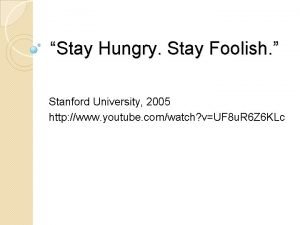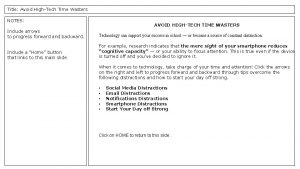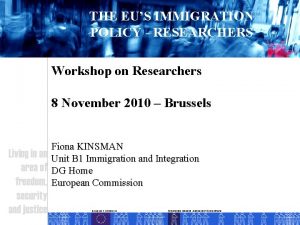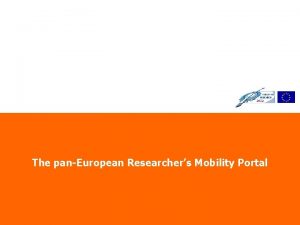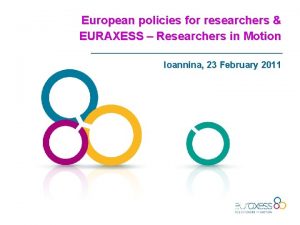How researchers can avoid doing foolish digital health





















- Slides: 21

How researchers can avoid doing foolish (digital) health research Dr Julia Bailey Senior Clinical Lecturer University College London

Overview n What is foolish (quantitative) research? n What can qualitative research bring? ¨ Understanding meanings ¨ Understanding context ¨ Understanding complexity

Medical Research Increasing numbers of qualitative studies n Patient views, beliefs, experiences n User involvement in intervention design n Qualitative evaluations of interventions ¨ Usually ‘literal’, thematic analyses (post-positivist)

Medical Research British Medical Journal (simple search) n 4, 336 papers: ‘randomised controlled trial’ n 270 papers: ‘qualitative’ n 4 papers: ‘discourse analysis’

Foolish research An example: sexual health of young people n Sexually transmitted infections (STI) are a problem n Condom use prevents STI n Let’s give young people facts about STI and tell them to use condoms n Then do a randomised controlled trial to see if it has worked ¨ Measure impact on condom use and STI

Meanings n Assumption that ‘sex’ means heterosexual penis-invagina sex n What counts as sex? – masturbation, sex with clothes on, virtual sex… STI may not be a concern ¨ Condom use may not be relevant ¨

Meanings n Assumptions about STI Myths about ability to judge who is ‘clean’ or ‘unclean’ n Stigma – only ‘promiscuous’ people are likely to get STI (so I’m safe) n n The meanings of condom use Stigma – implied promiscuity n Barrier to intimacy n Can signify lack of trust n

Context of young people's sexual activity Young people’s sexuality is often not acknowledged n Sex in semi-public places (parks, parties) n Drink, drugs n Competing influences (discourses) – family, religion, media, peers n

Meanings of (young people’s) sexual activity n Popularity and prestige, fitting in n Identity formation – sexual identity, becoming adult n Image, appearance, desirability n Managing ‘reputation’ n Gendered meanings – stigma and pressure

Is STI an important priority for young people? n No - n 157 different reasons for having sex! n More of a priority: ¨Sexual experience/adventure ¨Getting a boyfriend/girlfriend ¨Sexual pleasure ¨Avoiding pregnancy

Complexity of using condoms Difficult to access clinics (adults want know where young people are) n Privacy – where can they keep condoms? n Stigma n Appropriate size n Communication skills n Technically tricky n Interrupts sex n Anxiety and erection problems n Impact on pleasure n

Complexity of ‘safer sex’ n Condom use is only one element of safer sex n Physical safety (sexual assault, drink, drugs) n Emotional safety

Measuring complex outcomes (sexual wellbeing) n Randomised controlled trial of an intervention¨ Outcomes ¨ Condom use (survey questions) ¨ Sexually transmitted infection diagnoses ¨ What about pleasure, non-penetrative sex, satisfaction with sex lives and relationships, partner abuse, sexual problems, sexual identity, happier partner choice, consent and respect …. ?

Let’s give young people information about STI and tell them to use condoms n What’s wrong with this model? n Doesn’t take into account – Meanings (of sex, relationships, condom use…) ¨ The social contexts of sexuality ¨ The complexity and social nature of § Behaviours (assumes a linear, rational model) § Sexual wellbeing ¨

Facebook experiment n n n Facebook (N = 689, 003) Randomly assigned to intervention or control Posts expressing positive or negative emotional states were displayed or blocked from other users’ news feeds, and subsequent posts’ emotional content was noted. Kramer DI, Guillory JE, Hancock JT. Experimental evidence of massive-scale emotional contagion through social networks. Psychol Cogn Sci 2014; 111: 8788– 90.

Foolish interpretation n People posted marginally fewer posts which used negative or positive words n “emotional states can be transferred to others via emotional contagion, leading people to experience the same emotions without their awareness. We provide experimental evidence that emotional contagion occurs without direct interaction between people” n But What does posting an emotional state mean? What are the social meanings of a post? (e. g. social status, identity construction, group affiliation) n n

Pitfalls of online research methods n Online surveys, online trials ¨ Tempting n to collect huge amounts of data doesn’t make it more valid ¨ Compulsory n n questions lost ability to scribble in the margins Qualitative research online (e. g. synchronous chat, email) non-verbal signals lost n brevity has drawbacks n

Avoid doing foolish surveys n Find out participants’ priorities n Test question wording and meanings with the target group n Give a range of options n Leave space for comments

Avoid doing foolish surveys n Acknowledge that social phenomena are complex n Acknowledge the social nature of research itself n You can never know the precise meanings of tick-box answers n Interpret findings reflexively, and with reference to theory n Don’t over-claim: surveys can give a rough idea about social phenomena

Avoid doing foolish randomised controlled trials n Find out what the problems actually are ¨ do qualitative research n n Develop an intervention (with users) which addresses these problems ¨ n do qualitative research Measure outcomes which reflect participants’ priorities ¨ n Meanings Complexity Context do qualitative research Find out why the trial did or did not work ¨ do qualitative research

Spring 2016 n UCL Qualitative Research Methods course n KCL Medical Discourses course julia. bailey@ucl. ac. uk Twitter @juliavbailey
 How to avoid foolish opinion
How to avoid foolish opinion Anything worth doing is not necessarily worth doing well
Anything worth doing is not necessarily worth doing well Doing nothing is doing ill
Doing nothing is doing ill How can using refusal skills help you to avoid stress
How can using refusal skills help you to avoid stress If you can't avoid it enjoy it
If you can't avoid it enjoy it How will you avoid plagiarism
How will you avoid plagiarism What does stay hungry stay foolish mean
What does stay hungry stay foolish mean Six rulers nfl team
Six rulers nfl team I'm alright sevryn lyrics
I'm alright sevryn lyrics Stay tuned stay foolish
Stay tuned stay foolish You are so foolish
You are so foolish That was a really foolish thing to say
That was a really foolish thing to say Gerunds and infinitives as direct objects
Gerunds and infinitives as direct objects To wait seemed foolish when decisive action was required
To wait seemed foolish when decisive action was required Traveling might satisfy your desire for new experiences.
Traveling might satisfy your desire for new experiences. Stay hungry stay foolish significato
Stay hungry stay foolish significato Some may call it foolish and impossible
Some may call it foolish and impossible Researchers who are studying a new shampoo formula
Researchers who are studying a new shampoo formula When researchers unwittingly bring about the situation
When researchers unwittingly bring about the situation Five year old tammy mistakenly
Five year old tammy mistakenly Analogue studies are used when researchers ____.
Analogue studies are used when researchers ____. Researchers
Researchers






